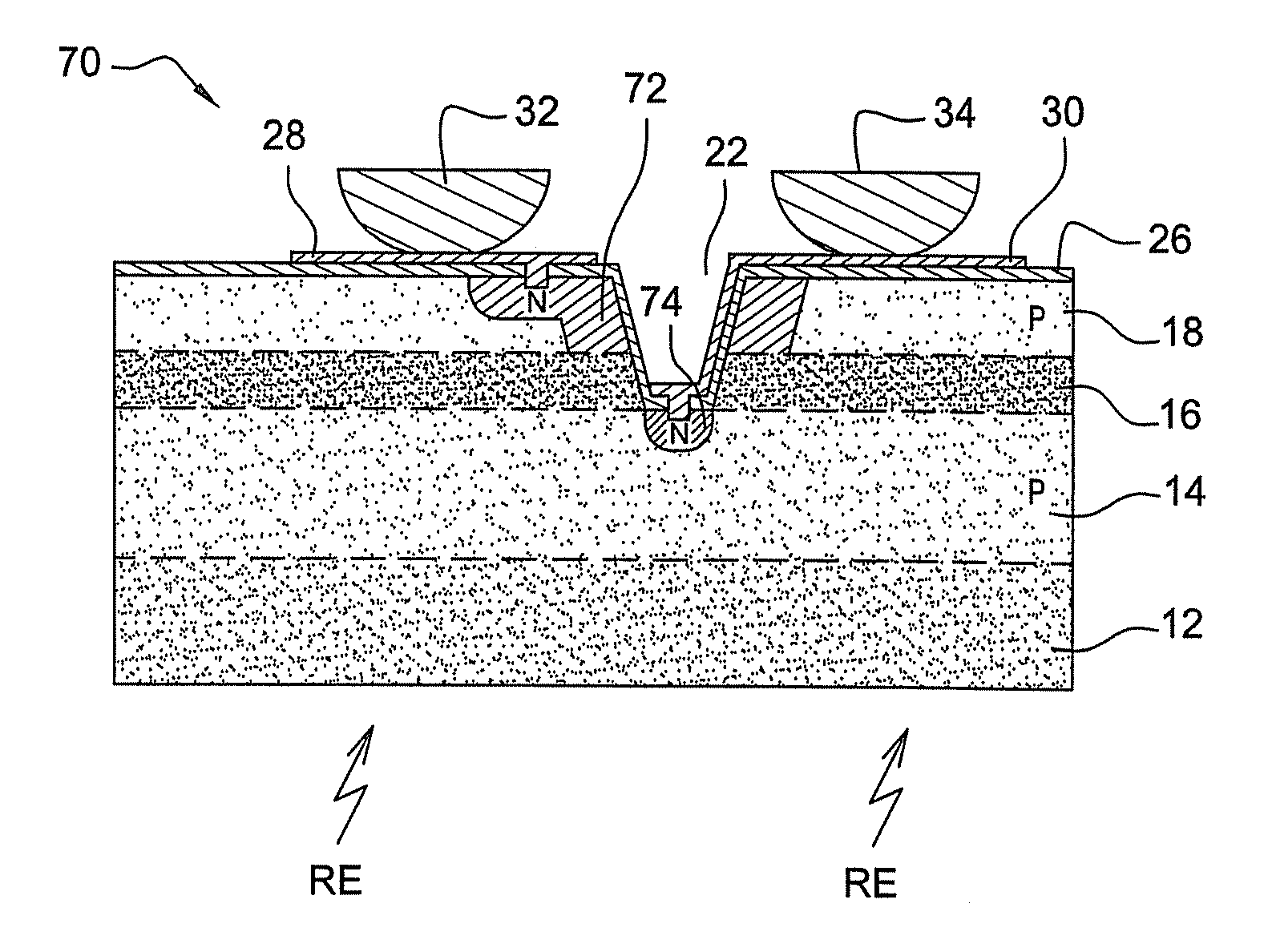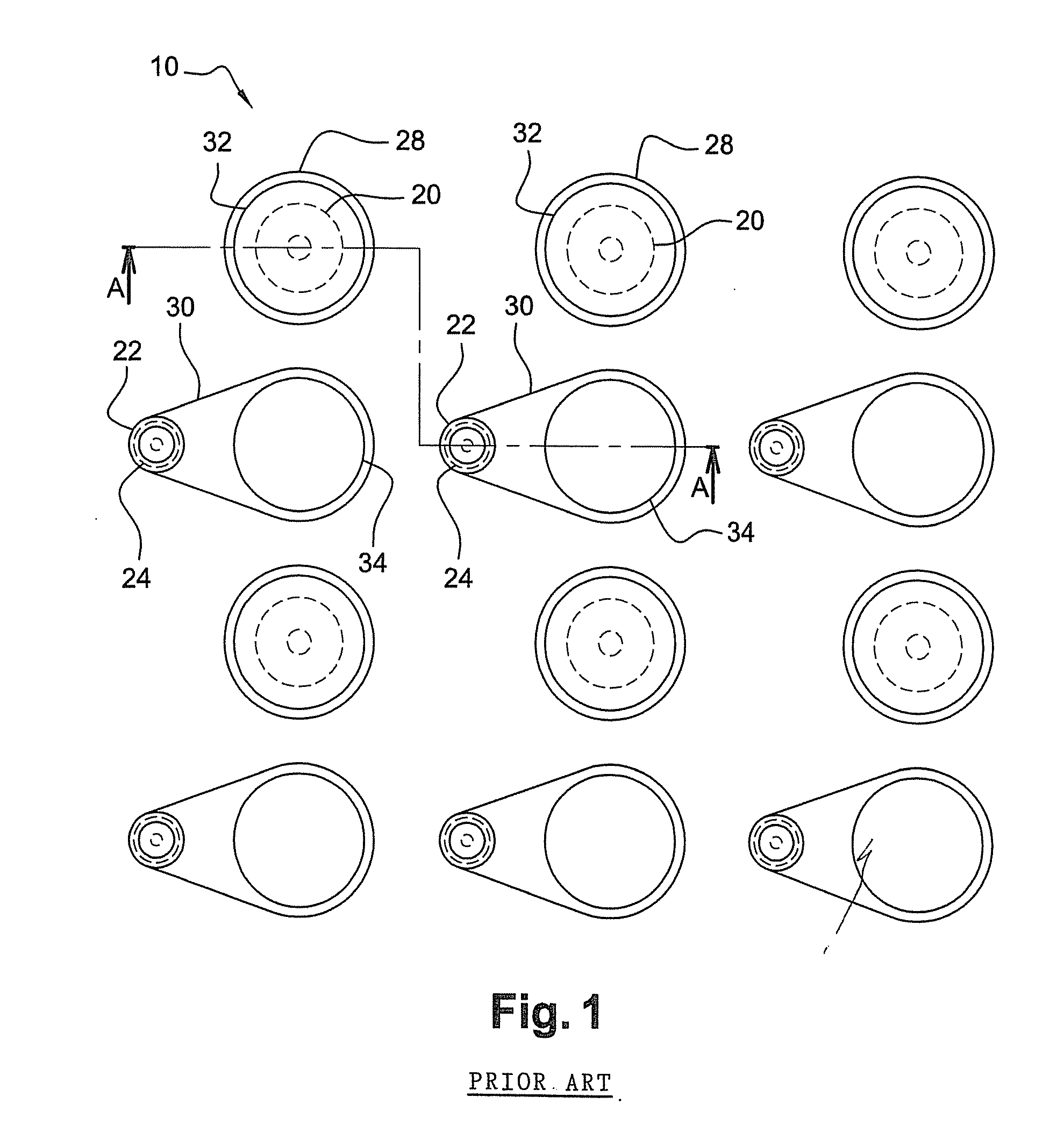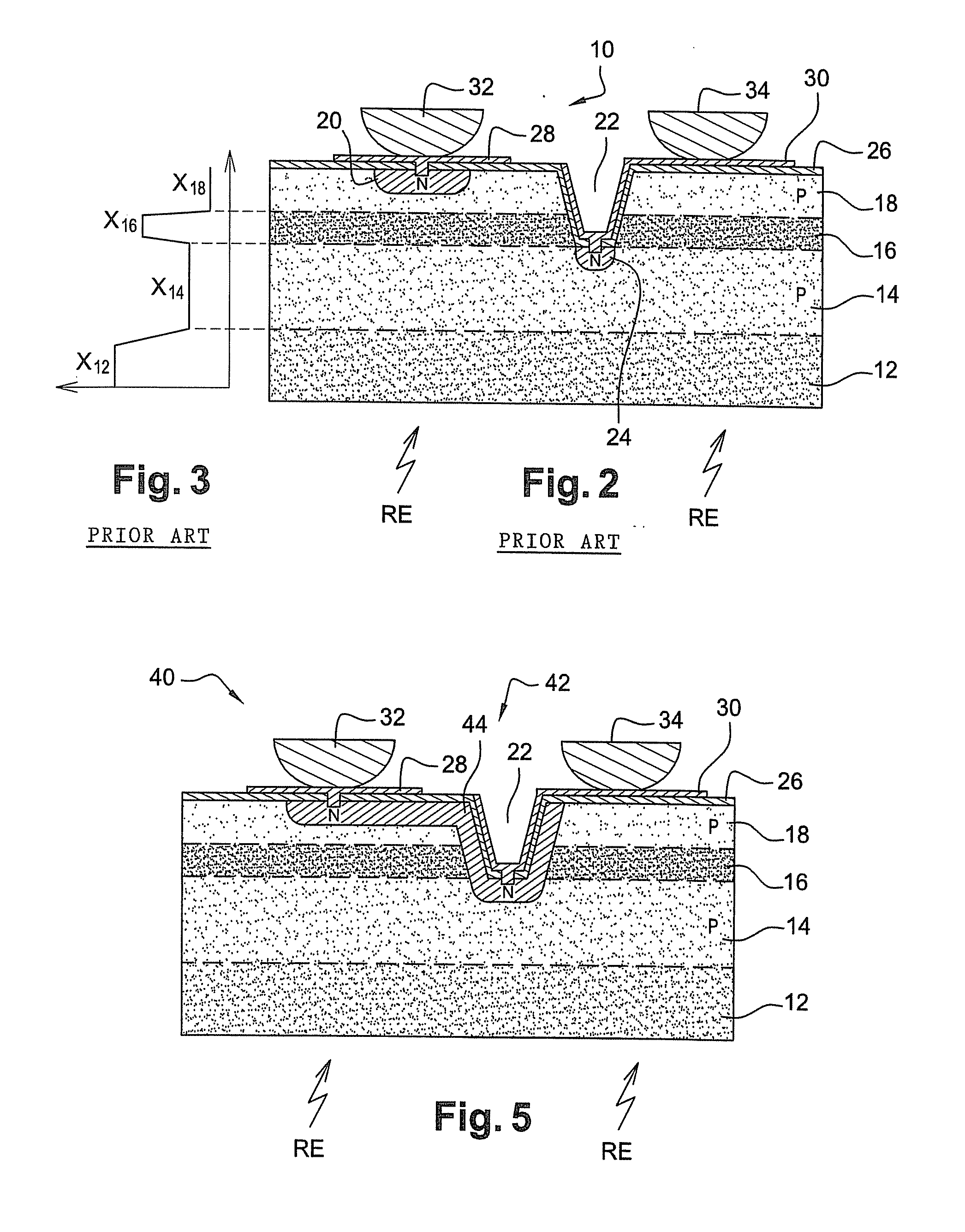Bispectral multilayer photodiode detector and method for manufacturing such a detector
a photodiode detector and multi-layer technology, applied in the field of bispectral detection, can solve the problems of high surface recombination rate and many imperfections in the opening walls of the openings, and achieve the effect of avoiding pinching
- Summary
- Abstract
- Description
- Claims
- Application Information
AI Technical Summary
Benefits of technology
Problems solved by technology
Method used
Image
Examples
first embodiment
[0083]A detector 40 according to a first embodiment of the invention is described below making reference to FIGS. 3 and 6. Detector 40 differs from detector 10 in FIGS. 1 to 3 by virtue of the shape of the N-type semiconductor zones, or “N-type zones”, implanted in layers 14, 16 and 18 of the stack.
[0084]More especially, after depositing passivation layer 26, N-type doping is performed by boron ion implantation for example, on portions of the upper face 42 of the stack through passivation layer 26.
[0085]This ion implantation is preferably performed using an appropriate mask placed on the upper face 42 and masking the latter, except for those portions that are to be implanted. Layers 12, 14, 16, openings 22, contact pads 28, 30 and interfacing 32, 34 are produced in accordance with the method described in the document entitled “Status of HgCdTe bicolor and dual-band infrared array at LETI” by Destefanis, JEM 36(8), p. 1031, 2007.
[0086]Each of the implanted portions comprises an openi...
second embodiment
[0102]As stated earlier, the first embodiment makes it possible to optimise the fill factor of the photodiodes created by ion implantation. However, degraded performance may be observed because the N-type zones in upper layer 18 comprise vertical parts formed in the flanks of openings 22. There may be pinch-off regions in the PN junctions of upper layer 18, especially at locations where zone 44 forms a bend. Pinch-off in a PN junction has the effect of increasing the leakage currents in the latter, especially due to the tunnel effect.
[0103]In order to mitigate this problem, a detector 50 according to a second embodiment, shown in FIGS. 7 and 8 differs from the first embodiment in that N-type zones 20 of the upper layer, under contact pads 28, are distinct from the N-type zones 52 formed on the flanks of openings 22, as shown in FIGS. 7 and 8. N-type zones 20 of the PN junctions in upper layer 18 therefore do not contain any pinch-off region.
[0104]The method for fabricating detector ...
third embodiment
[0105]In the second embodiment, the potential of the N-type zones faulted on the flanks of openings 22 and contained in upper layer 18 is free to float because they are not connected to any fixed potential. The zones are electrically insulated from the zones in lower layer 14 because of the barrier function fulfilled by intermediate layer 16, as explained above in relation to the choice of materials used for the intermediate layer in the first embodiment, and are also not connected to the N-type zones of the PN junctions in upper layer 18 (which are brought to a potential for charge collection purposes).
[0106]If no bias is applied to the N-type zone on the flank of openings 22, the PN junction will naturally assume its open-circuit potential. However, because this potential floats, the space-charge zone of this PN junction is likely to fluctuate over time due to the effect of fluctuations in various parameters (e.g. fluctuation of the recombination current associated with the surfac...
PUM
 Login to View More
Login to View More Abstract
Description
Claims
Application Information
 Login to View More
Login to View More - R&D
- Intellectual Property
- Life Sciences
- Materials
- Tech Scout
- Unparalleled Data Quality
- Higher Quality Content
- 60% Fewer Hallucinations
Browse by: Latest US Patents, China's latest patents, Technical Efficacy Thesaurus, Application Domain, Technology Topic, Popular Technical Reports.
© 2025 PatSnap. All rights reserved.Legal|Privacy policy|Modern Slavery Act Transparency Statement|Sitemap|About US| Contact US: help@patsnap.com



